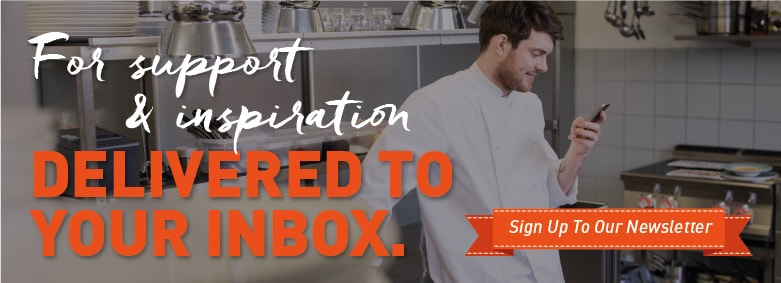Have you heard about food security yet? No, it’s not about keeping your most precious ingredients under lock and key… but humour aside, it’s about with making sure that there’s a sustainable plan in place to ensure that the world can keep providing enough food for everyone to eat in the future. And that’s not just about growing practices, but the amount of food we throw away, too.
Official figures estimate that around a third* of the world’s food isn’t used before it perishes or is thrown out. That’s enough to feed up to 2 billion people. OK, we understand that’s a huge idea to grapple with (and possibly a long conversation to have after service), but we at Unilever are proud to say we’ve got sustainability in our DNA.
Our own research has found that 84% of people are worried about the amount of food thrown away in the places they eat out. And 70% say that they’d happily pay more, knowing that their favourite restaurant/café/hotel were taking the business of waste management seriously. So, it makes sound environmental and financial sense to get wise to waste in your own kitchen, don’t you think? Here’s our 5 top tips:


This isn’t half as complicated as it sounds. You’ll simply use three differently labelled waste bins to divide into spoilage, prep waste and customer plate waste (on average, 30% of food is left untouched). Keep a detailed daily record for at least three days, then get an idea of which areas need attention.

You may have dreams of offering every dish under the sun to your customers, but this means higher volumes of stock and ingredients. In turn, this means a higher risk of produce going out of stock and more kitchen labour involved in preparing mise en place. Be ruthless and strip out the slow-moving dishes that eat up valuable ingredients and labour time.


This is key part of cutting back on waste. It’s about making an educated guess on how many items on our menu you’re going to sell to your diners. You should consider the season: a fresh and crisp chicken salad may be a hit in the summer but end up in the bin in the winter. Look back at last year’s forecasts, too, and know what’s going on in your neighbourhood. Big events and festivals may lead to more customers coming through the door.

Honesty truly is the best policy here. Take a look at your kitchen team and their skill strengths. Are they up to delivering the dishes on the menu? If not, waste will rocket, along with tempers! And make sure you’ve got the right kit to knock out high volumes of those dishes, too.

Paella, the delicious Spanish dish, was one of the original dishes made from leftover ingredients, and we all know how popular it is now. Why not use chicken trimmings for a terrine, stale brioche for a bread-based dessert, or leftover vegetables to whizz up a hearty soup? A little bit of imagination can go a long way as a dish of the day at your peak business hour! And last but not least, make sure you’re a recycling warrior! Read more about Unilever’s own commitment to PET plastic recycling here.

Hungry for more ideas to make your kitchen sustainable? Then why not sign up for the Unilever Food Solutions newsletter? Packed with tips and tricks, it’s delivered straight to your inbox – one less thing to think about on your long ‘to-do’ list!
*Figure from the Food and Agriculture Organisation
**Foodwaste. i.e. Case studies of Organisations Managing Food Waste Properly 2010.
